My first visit to Hanoi was in June 1990. I arrived aboard the early morning flight from Saigon with my boss at the time, Nick. Saigon had been closed for just 15 years. Hanoi had been closed for close on 40. I'd loved my first taste of Saigon and I couldn't wait to see Hanoi.
Vietnam Airlines' infamous fleet of ageing Russian Tupolev TU-154s carried a mix of government officials and privileged locals once a day between the old southern capital and the victorious post-1975 national capital.
Hanoi may have won the war but if the state of play in 1990 was anything to go by, the spoils of victory were modest.
Saigon's Tan Son Nhat airport was in poor shape but Hanoi's Noi Bai was far worse. And the ride to Hanoi from the airport along cow tracks - it took two hours on a good day - was horrendous.
It was good preparation. Saigon in 1990 looked two or three decades out of time, Hanoi was at least four or five decades out.
We stayed at the Government Guest House - not in the beautiful old French building at the front that had been Ho Chi Minh's office for a time. No, we stayed in the Soviet style building at the back.
It was considered the best accommodation in Hanoi at the time. It's where foreign government delegations stayed as well. But it wasn't flash. 1970s air conditioners sweated it out, rattling the walls in an effort to combat the city's notoriously oppressive summer.
A hundred metres away, the colonial era Metropole Hotel, now the finest in town, was still a rat infested dump. A deal to upgrade it was in the pipeline.
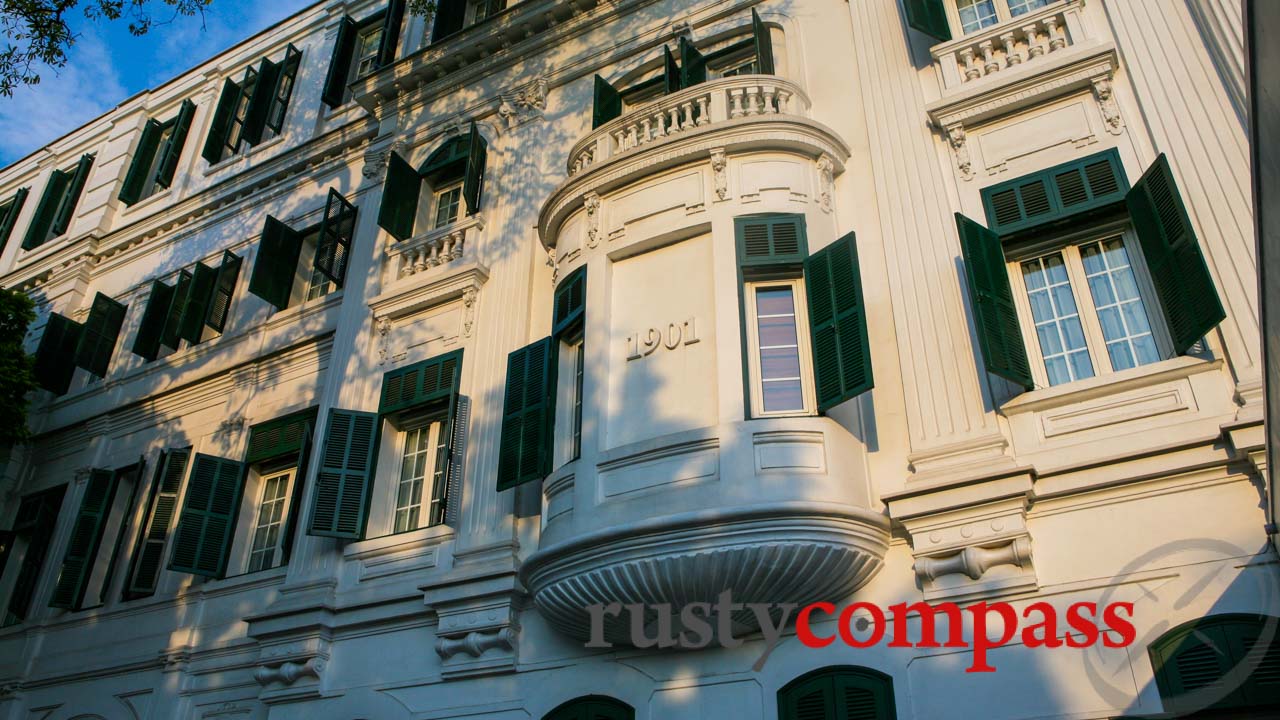
Photo: Mark Bowyer Now Hanoi's most prestigious hotel, in the early 90s, the Metropole was still a rat-infested dump.
Nick was negotiating the creation of Vietnam's first English language investment newspaper, The Vietnam Investment Review. I was his assistant. I was also helping him pull together a book on Vietnam's recent emergence as a new foreign investment hotspot. The book was published as Discover Vietnam - an investment guide, 1991 and included a foreword by reformist Prime Minister Vo Van Kiet.
God knows whether anybody read it. And if they did, it's hard to imagine they obtained much value from it except those few nuggets that couldn't be denied: Vietnam after decades of economic failure was set to open its economy and it could only go one way; the Vietnamese were smart, enthusiastic and desperate to learn; and everyone could be a winner selling in this market of 64 million (that's what I recall the population was back then, it's 90 million now), on the cusp of a frenzy of consumerism.
Nearly 25 years later, Vietnam experts rattle off similar lines at expensive investment conferences.
Austere. That's the adjective foreign writers seemed to reach for when describing early 90s Hanoi. And if the airport road was a shock, the first meal was worse.
The comparisons with Saigon were unavoidable.
The rice was more coarse. And every few mouthfuls you'd need to check your teeth. There were crunchy bits that could easily force a dental appointment that would be even more dreaded in Hanoi than the normal variety back home. The US trade embargo meant many pharmaceuticals taken for granted in the west were not available in Vietnam.
Pho ga, chicken noodle soup Hanoi style, had plenty of chicken flavour - thanks to bone and broth. Meat was conspicuously absent though. If you ever saw the wretched creatures that passed for chickens in Hanoi, it was no surprise that the pho was all but meat free. The chickens were too.
The plentiful supplies of fruit, seafood and even quality rice, taken for granted in Saigon, were in short supply in Hanoi.
Hanoi was a harsher environment in all senses. It always had been. The Red River Delta that supplied its food was not near as generous as the Mekong Delta in the south. The weather was less accommodating too. And poor infrastructure prevented the movement of large amounts of food from the south that occurs today.
Hanoi's harsh conditions bred a stoic people. 50 years of hardship - both war and poverty - was written into the faces of the elderly men and women gathered around Hoan Kiem Lake in the city centre. There was grace inscribed in those faces too. That combination of stoicism and grace was part of Hanoi's magnetism and there are still traces of it today.
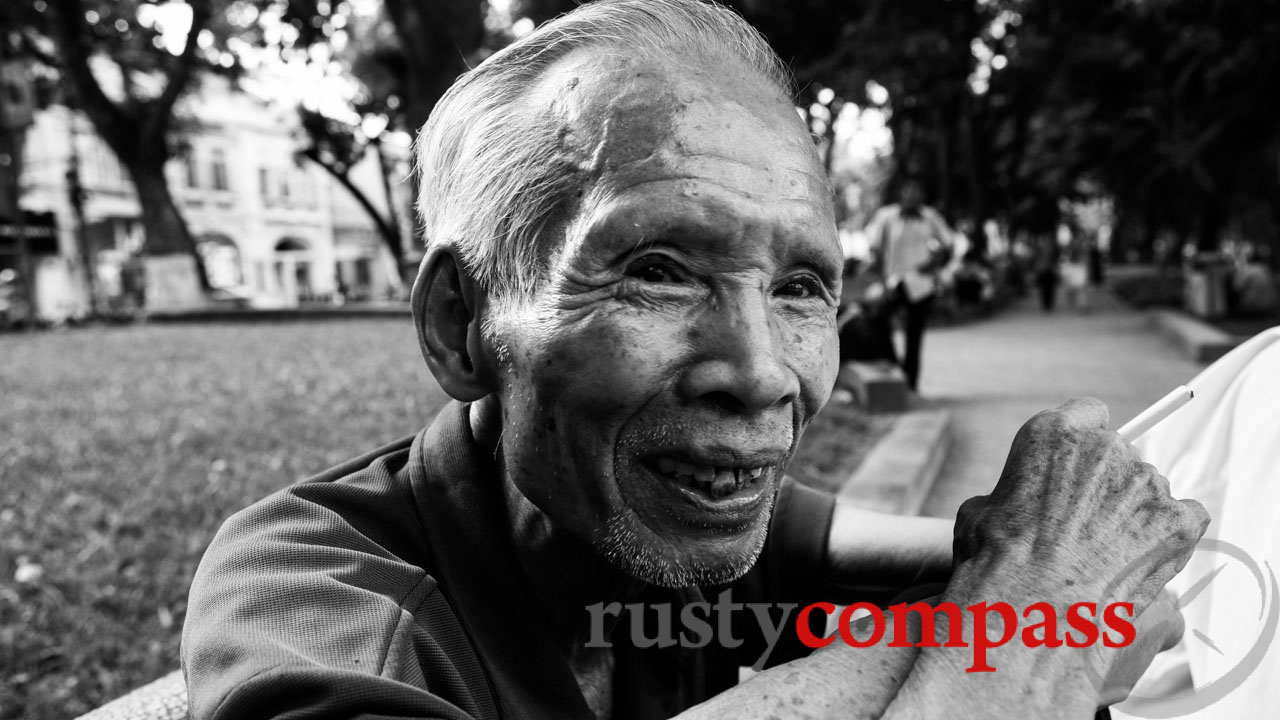
Photo: Mark Bowyer The visibility of Hanoi's elderly, adds a warmth to a city that has some hard edges.
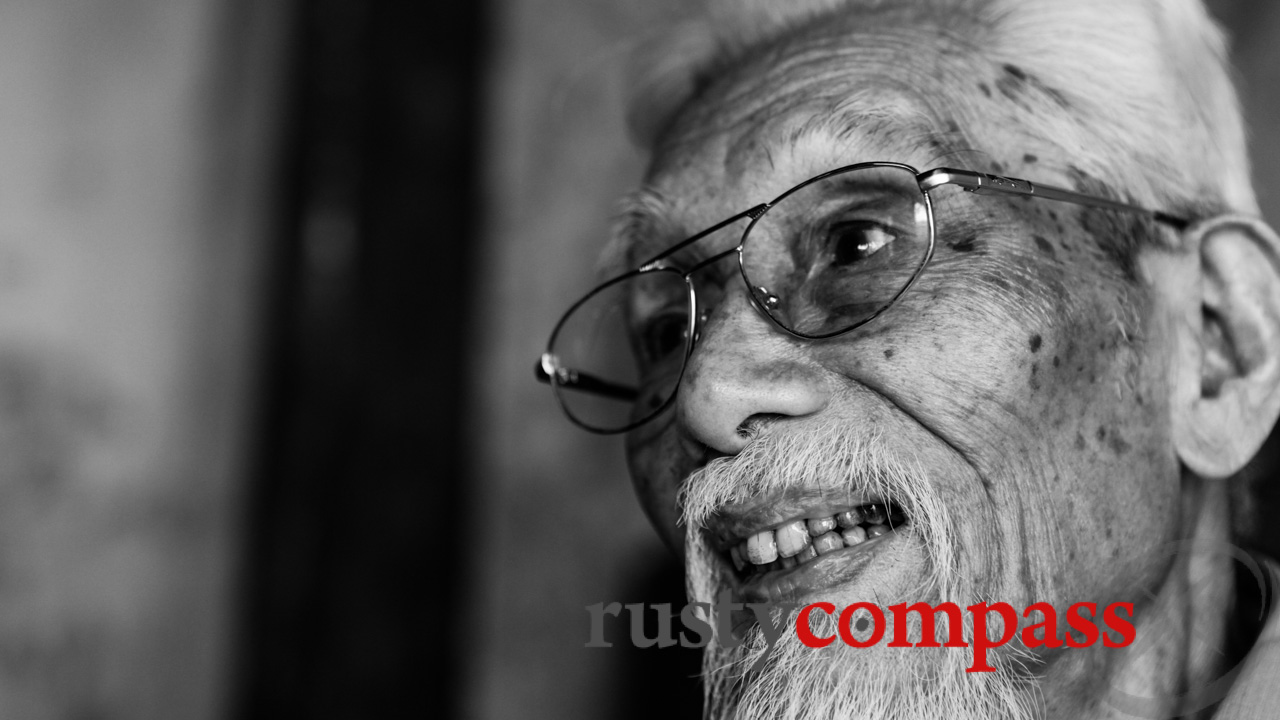
Photo: Mark Bowyer Hanoi's elderly, always visible, add a warmth to a city that has some hard edges.
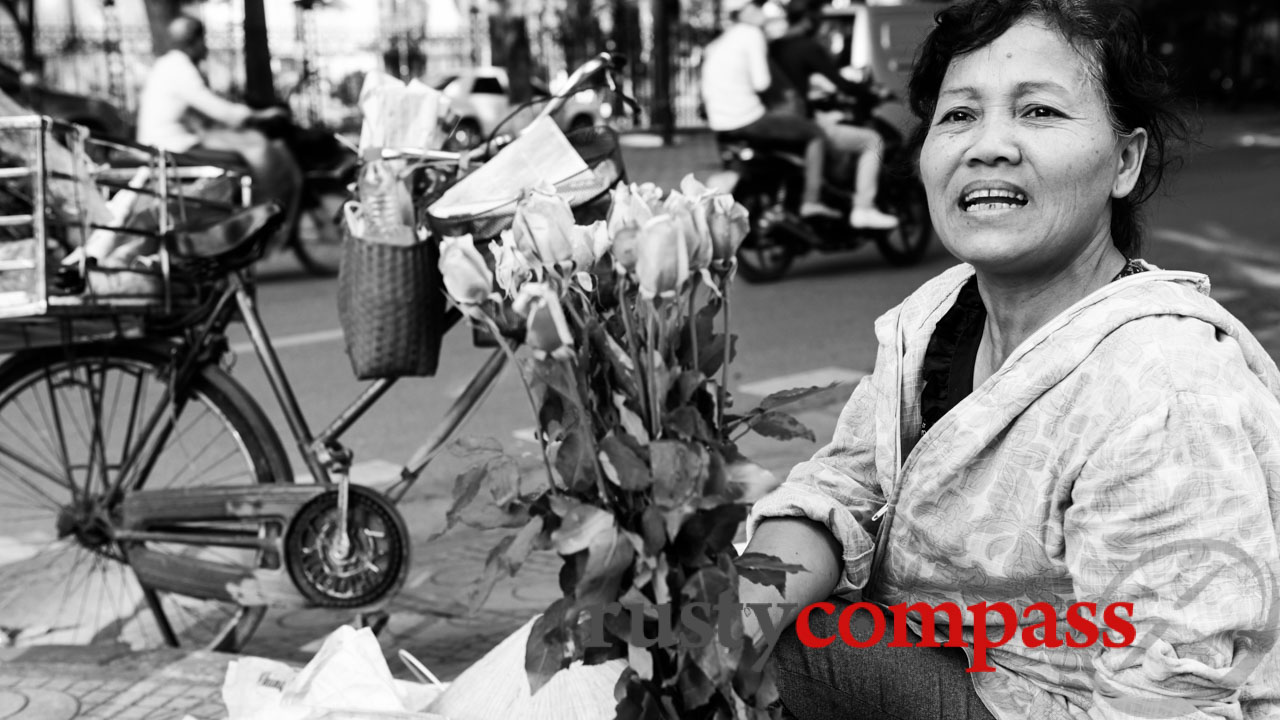
Photo: Mark Bowyer Hanoi's elderly, always visible, add a warmth to a city that has some hard edges.
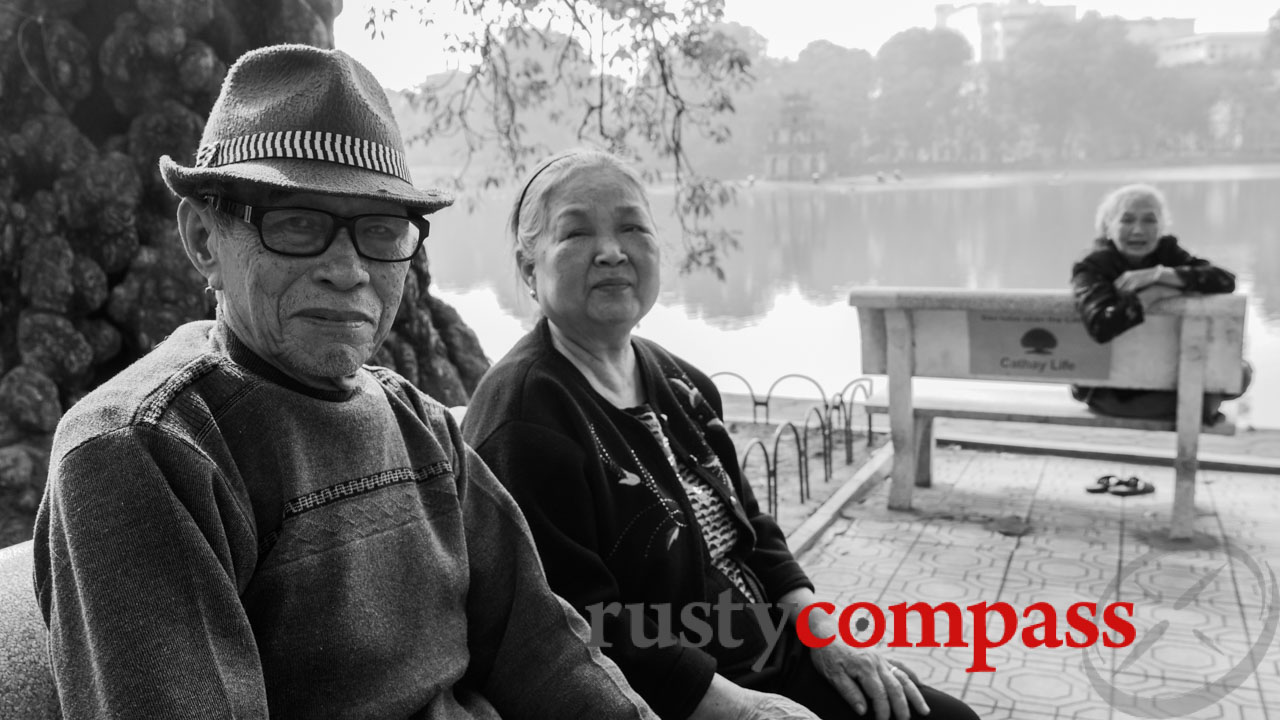
Photo: Mark Bowyer Hanoi's elderly, always visible, add a warmth to a city that has some hard edges.
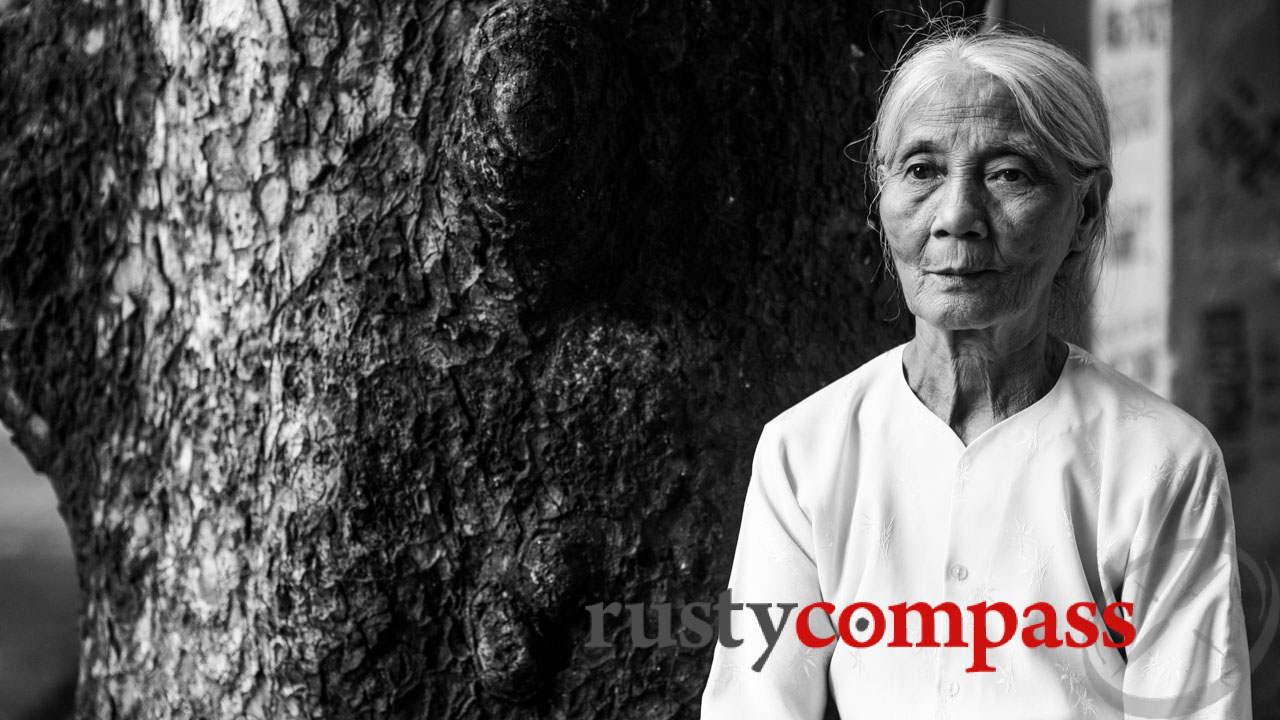
Photo: Mark Bowyer Hanoi's elderly, always visible, add a warmth to a city that has some hard edges.
Foreigners may have viewed Hanoi in 1990 as a place of austerity but for the locals, a period of relative plenty had begun. Only four years earlier, in 1986, the government ended the "subsidy period", a time of centrally controlled misery where food was rationed and malnutrition was rife.
Hanoians harbouring hopes that the end of decades of war in 1975 might usher a period of peaceful prosperity were sorely disappointed.
The harshness of the late 1970s and early 80s, especially in the north, pressed itself into the physicality of the young. This was a very thin nation. Teeth were turned grey by poor quality antibiotics. Arms were scarred by heavy inoculations. Life was tough.
It was the famine of the subsidy period, combined with the collapse of the Soviet Union, that forced fresh thinking on a rigidly ideological ruling party. Modest market reforms in agriculture were adopted and a tentative opening of the economy began.
The impact was swift. Decollectivised farms produced a surge in rice production. After decades of imports, from 1989, Vietnam became a major rice exporter. Other parts of the agricultural economy sprung to life too. A long period of rapid economic growth commenced. Improved living standards followed.
In 1990, a handful of western restaurants were serving the trickle of tourists and a growing number of foreign government and NGO visitors. I remember the cutlery more than the food. It was weightless and flimsy, bending or breaking in your hand. Better restaurants managed to score some Vietnam Airlines cutlery - you'd recognise it by the stamp - which was more like camp cutlery. It was just up to the task.
Hanoians weren't in the habit of eating steak so demand for cutlery wasn't high and there were better things to do with quality steel.
On that first visit, there wasn't much time for tourism stuff. It was mostly work. We stopped by Uncle Ho's Mausoleum to pay our respects and I took a solo walk around Hoan Kiem Lake. That was it. It wasn't much but seeing Ho Chi Minh for the first time was profound. I had begun exploring Vietnam's history and wanted to know more. Ho was already a towering figure.
It was around Hoan Kiem Lake where I heard the expression "lien xo" for the first time. I'd hear it many more times in the years that followed - especially in the provinces.
"Lien xo" was used as a greeting, I was never sure if it was endearing, to visitors from the former Soviet Union. Prior to 1990, Europeans in Vietnam were invariably from the former Soviet Union. So "lien xo" became a very familiar sound to foreigners in those early years.
Once the elderly gathered around the lake realised I wasn't Russian, they'd launch into French only to be disappointed again. If required, there was a good chance Polish, Bulgarian, German and Czech speakers wouldn't be far away. English was far less conspicuous than it is today. But getting by was never too difficult. I came to quickly appreciate the Vietnamese talent for language learning.
There were very few cars in the capital (most people still got around on bicycles as you'll see in the video), there was a fair chance that any car spotted would be a Russian Volga. The pre-1975 American and Japanese cars that were all through the south, never made it to Hanoi.
Saigon's police drove US Army Jeeps. Hanoi's police drove the Russian version. And the odd wonderful sidecar motorcycle like the one below.
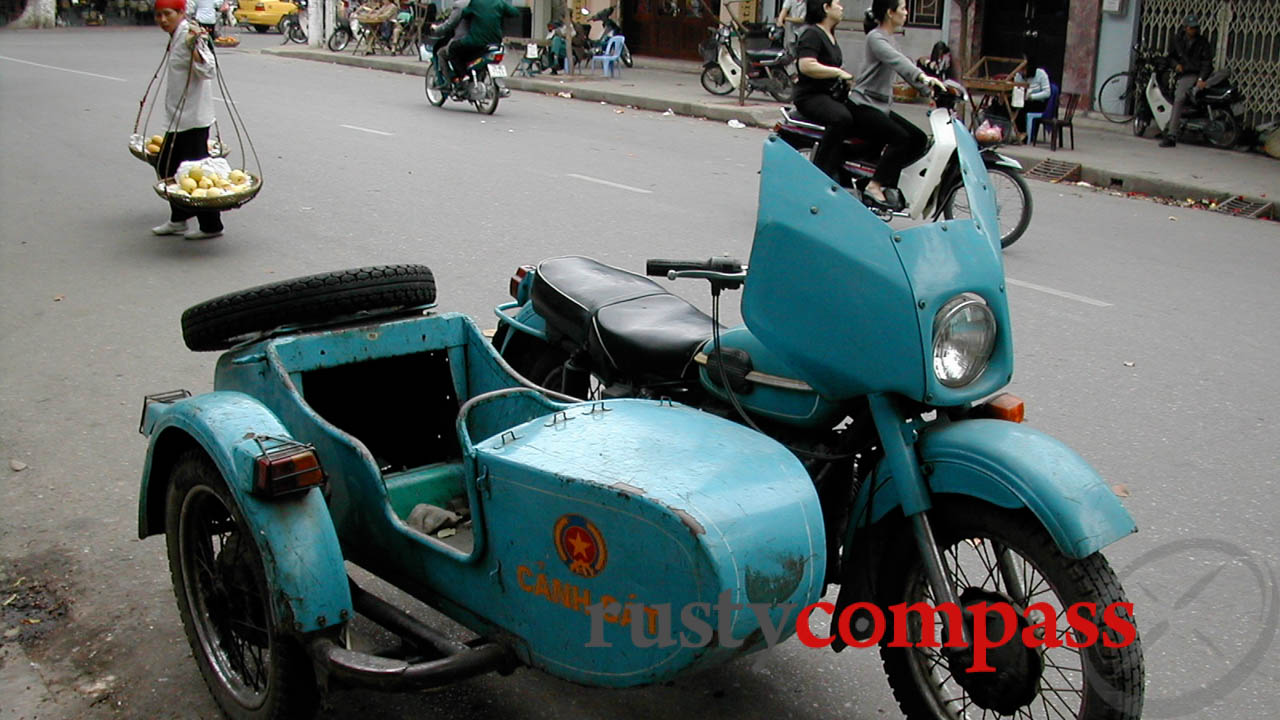
Photo: Mark Bowyer Hanoi police motorbike with sidecar in Nha Tho St. Late 1990s.
Hanoi's crumbling French colonial architecture, that is now for me one of the most striking features of the city, barely registered on my first trip. The Australian Embassy building of the time, on Ly Thuong Kiet St (now the Ambassador's residence), was the exception. It was a beauty. But that was it. Standouts like the Opera House were either completely unnoticed or so rundown as to be easily missed.
Hanoi's lakes left a stronger impression. That first walk around Hoan Kiem lake was unforgettable. I also remember having a few cans of Bia Hanoi by West Lake with Mr Duc, then the senior trade official in the Australian Embassy, on a hot summer afternoon. It was exciting stuff.
Visitors to the Embassy were still sufficiently rare that personalised attention from staff was common. The Embassy even hosted regular drinks out the back in what was known as the Billabong Club - until years later when the numbers swelled and things got out of hand.
And the people of Hanoi?
My contact with the locals on that first trip was pretty limited. We met government officials, Embassy officials and some local staff working with foreign companies.
While Saigon's irrepressible festive spirit was already resurfacing in 1990, Hanoi was still coming to terms with decades of hardship. There was optimism but there was also a reticence about foreigners that was easy to understand. Hanoi felt like a different country. In many ways it was. In many ways it still is.
While there are hundreds of thousands of Hanoians living in Saigon, even today, almost 40 years after the end of the war, you could fit Hanoi's Saigonese population into a small room.
Hanoians have been moving to Saigon en-masse since the defeat of the French in 1954. Saigonese have never been inclined to move to the north.
A Hanoian friend recently explained it, only partly in jest, "Real Hanoians now live in Saigon. Real Saigonese now live in the US or France". I'm not sure where that leaves the Hanoians still in Hanoi and the Saigonese still in Saigon.
I still love spending time in Hanoi, though it wears the downsides of a harsh two decade long contest for upward mobility on its sleeve. Pervasive corruption and nepotism do nothing to soften the edges.
Locals will tell you that the game is played harder and meaner in Hanoi than elsewhere in Vietnam. And nowhere is the country's soaring inequality more visible.
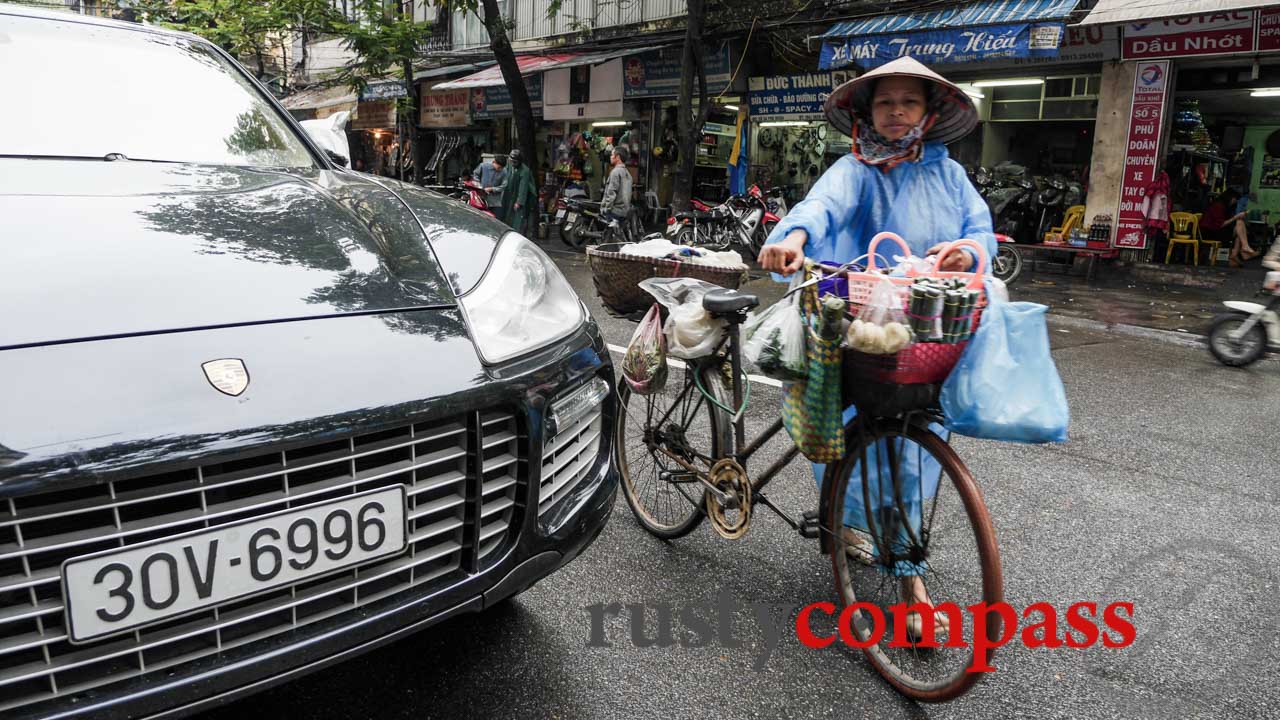
Photo: Mark Bowyer Overtaking a new Porsche, Hanoi today
The constant stream of Hanoians young and old still escaping to the south tells the story. They'll affirm their nostalgia and abiding love of the capital in the same breath as vowing to never live there again. "It's too hard to do business" they'll say.
But there are countervailing forces too. More than any place in Vietnam, Hanoi is home to many who have already moved on, or were never seduced in the first place, by the emptiness of the city's post-communist, Louis Vuitton, Gucci, BMW and plastic-surgery idolatry. Hanoi is still home to Vietnam's most vibrant artistic and intellectual scene. It's still the centre of tradition and culture. Even southerners will concede that. And there are signs that the capital's cultural life is gathering steam too.
The unique visibility of Hanoi's elderly on the streets, something that hasn't changed in decades, has a profound humanising effect.
It's a complex place with abundant magnetism.
I often say Hanoi is the best and worst of Vietnam. Hanoians seem to agree. Other Vietnamese are less generous. But after countless visits over 24 years, I'm always excited to head back.
I've included a selection of images of Hanoi's elderly taken in recent years. As I mention above, their visibility creates a warmth that softens some of the city's rougher edges.

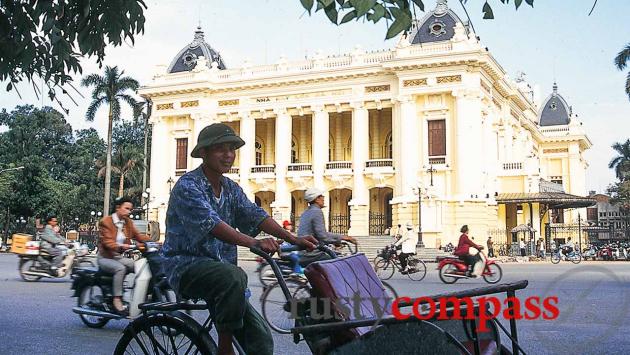



1 comment so far
I was in Hanoi in 93 and fell in love with Vietnam, it was so different to my western upbringing The people were welcoming and to me just an amazing place. I have returned several times since over the years and for the people its good they are moving forward, but for me I will never forget my first view of Hanoi when most people had bicycles or scooters and cars were rarely seen.